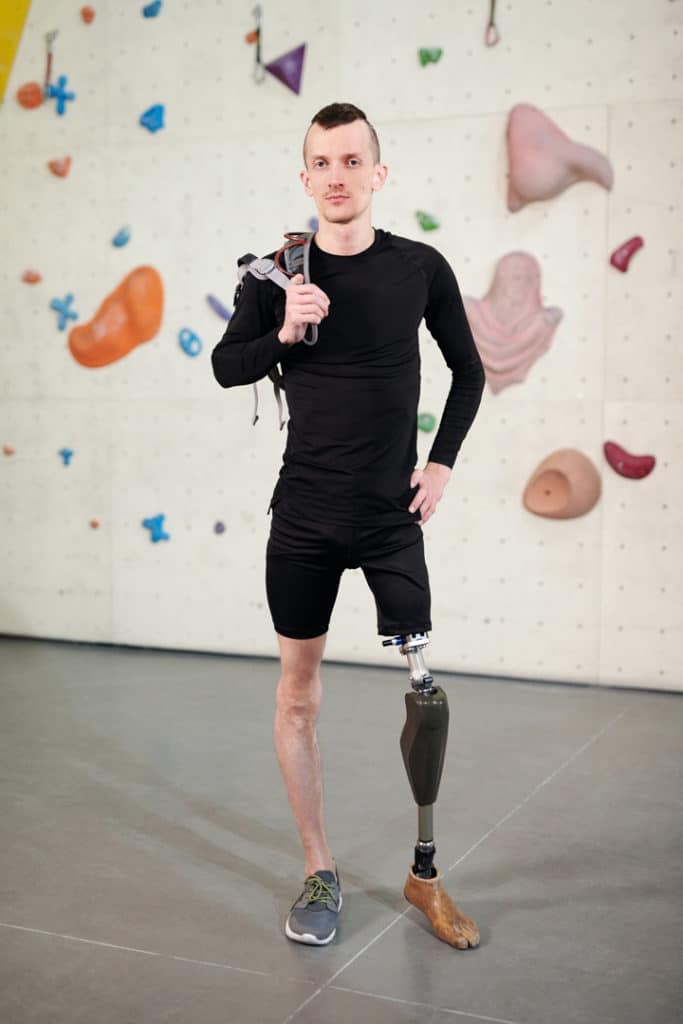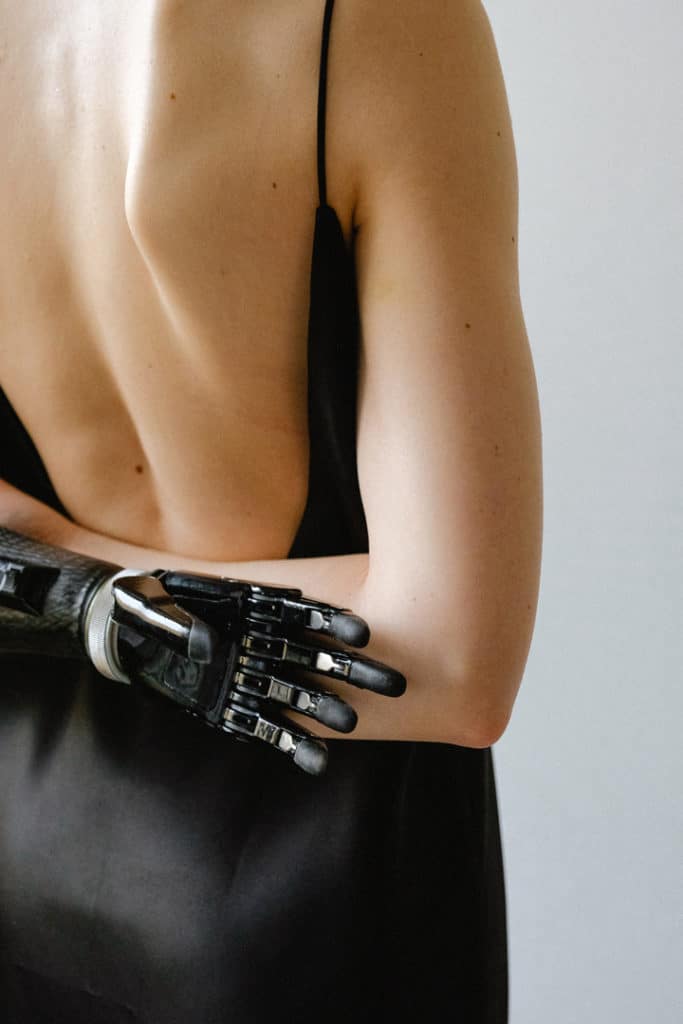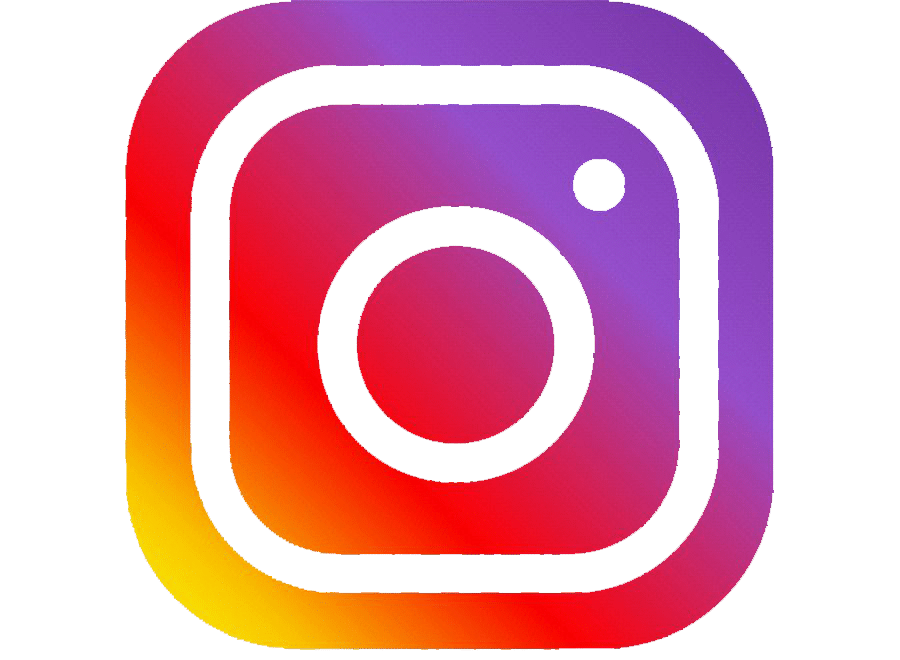In 2020, the foundations for an inclusion explosion have been laid. Can broadly designing for disability enable better products for all?
Nike’s most recent innovations include the adapt sneaker which can tie and loosen your shoelaces using voice control with google assistant. A recent article by Forbes called the feature a gimmick and ‘peak ridiculous’, however, from the perspective of someone who has spent time in a wheelchair, I saw this as an absolute gamechanger. Did Nike consider this when coming up with the idea? Irrespective of whether they did or didn’t’, for me the article signals that as an industry, we really need to step out of the able body filter and consider design for inclusivity, adaptability with innovation in mind.
2020 saw a greater representation of differently-abled models in advertising partly due to the success of the specialist talent agency Zebedee. Ellie Goldstein became Gucci beauty’s most-liked Instagram post, breaking down stereotypes in the beauty industry. However, as Zebedee’s Director Laura Johnson says only “0.06%” people featured in advertising have a disability. With the global size of the differently-abled market exceeding that of the sought-after young Gens, the potential for the fashion industry is huge.
Underrepresented market drivers
1in 7 individuals worldwide has a disability making them the largest minority group on the planet. Including their families, 4 in 7 have a connection to disability representing $8 trillion in annual disposable income In a fashion industry pushing for greater inclusivity and diversity it’s odd that such a huge market is often not considered or ignored by brands completely.
Tommy Hilfigure created Tommy Adaptive after having children with special needs, it’s aim is to give wearers added independence by offering a range with ‘discreet, truly functional modifications’. Hilfiger’s team held research groups and invited customer input during the design process developing one-handed zippers, magnetic buttons and styles designed especially for seated wear for a wheelchair consumer. It appears the awareness they found is missing in the broader industry, as it is estimated that UK businesses are missing out on £420 million in revenue each week as a result of poor disability awareness or understanding.
Innovation for inclusivity
The Open Style Lab, a partnership with The New School Parsons is “a non-profit committed to making style accessible regardless of their cognitive and physical abilities”, raising awareness of the need to educate designers on the realities and needs of these consumers. AI is allowing us to break those boundaries to make garments more inclusive and specific to varying needs. Discussions with Verena Ziegler, CEO of Bewear revealed the potential of her AI sewing pattern technology which can adapt to any body shape. This allows designers full creative product expression that can then be manufactured to fit the individuality and identity of any consumer’s body needs.
The pandemic has forced everybody to change the way they shop, and for vulnerable groups which may have spent months indoors shielding, video shopping and one to one personalised services have become increasingly integral to online shopping. With 3 in 4 disabled people and their families abandoning a UK business citing poor accessibility and/or customer service digital transformations offer an opportunity to serve this market in a unique and purpose-driven way. A conversation with chief product officer at Confer With revealed how an immersive video engagement service, allowing retail experts to be matched with consumers offers a personal and bespoke shopping experience. From my perspective, it’s clear that allowing brands to engage with customers on a one to one basis and understand the needs of those who may not be able to make it in to the store is now a starkly valuable commodity to which he agreed, “the accessibility angle is a fascinating one and one we can really support”.
The intertwining of fashion and gaming is inspiring key changemakers such as Virgin Abloh “It’s exciting to think about the digital space and what is designed currently and what could be. I would hope that in the digital sense, there were no buttons on a garment that served no function.”
I believe that when new opportunities give us the freedom to rethink the boundaries of functionality, we could make inclusive clothing design the quality standard for all.
Opportunities not to be missed
I, like others, believe there is still a long way to go with advertising and it would be enlightening to see more brands invest as a result of broader need rather than the personal experiences of a brand’s leadership. Changing the fastenings or opening placements on a garment to increase functionality isn’t being adopted on a broad scale, so, while its positive to see some progress, a potential opportunity is being missed by the fashion industry. I see an industry move towards inclusivity and sustainability but the response to ability is generally tokenistic. Could a business model which uses on-demand manufacturing, the potential of new AI tools to increase profitability, and innovations in shopping to capture every consumer’s needs create a more open mindset where self-lacing sneakers are accepted as a positive innovation for all?
SOURCES
[1] https://wearepurple.org.uk/understanding-the-purple-pound-market/
https://www.forbes.com/sites/davidphelan/2020/10/08/hey-google-can-tighten-your-nike-laces-have-we-reached-peak-ridiculous/?sh=61e9fa42715f
The power of disability Al Etmanski
https://www.businessoffashion.com/articles/news-analysis/how-can-fashion-better-address-the-needs-of-disabled-people





